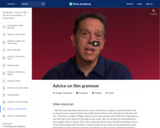
Advice for storytellers.
- Subject:
- Applied Science
- Arts and Humanities
- Computer Science
- Graphic Arts
- Material Type:
- Lesson
- Provider:
- Khan Academy
- Provider Set:
- Pixar
- Author:
- Disney Pixar
- Khan Academy
- Date Added:
- 07/14/2021

Advice for storytellers.
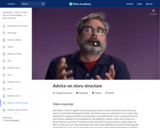
Advice from storytellers on structure.

Advice from our storytellers.
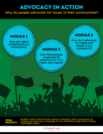
This unit begins by inviting students to tell the story of their community using artifacts from Washington's history. This allows them to reflect on shared values as well as how people have organized to advocate for those values. Then, students explore how rights are established in their community by analyzing the Washington State Constitution, the Puyallup Tribe Constitution, and the Treaty of Medicine Creek. Next, students investigate four different historic examples of how people have advocated for their rights and values in their community and choose one to research in further depth. In the final phase of the unit, student teams develop an advocacy campaign for a right that is currently being challenged. They conduct research on an issue of their choice, create and execute an action plan, and participate in an advocacy fair to campaign for change in their community. Finally, students draw on what they've learned to answer the unit driving question: "Why do people advocate for issues in their community?"

Students will use iPads to research and perform a workout that focuses on core strength. Students will evaluate the workout upon completion.

This workout is designed to be used in a Fitness Facility. It is aligned with the Nebraska State Physical Education Standards

This lesson is designed to be used in a fitness facility. It is aligned with the Nebraska State Physical Education Standards.
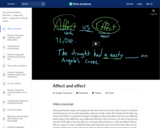
TL;DW: affect's a verb and effect's a noun. But there's a little more to it than that.

As taught Semesters 1 and 2, 2011
This learning object compares and contrasts afferent and efferent nerves of the peripheral nervous system.
This learning object is used as part of the level 1 Biological Sciences module delivered by the School of Nursing, Midwifery and Physiotherapy.
Andy Meal – lecturer in Biological Sciences, School of Nursing, Midwifery and Physiotherapy, University of Nottingham.
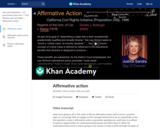
What affirmative action is in the United States and major legal cases and initiatives surrounding it. Coverage of Regents of the University of California v. Bakke, Grutter v. Bollinger, and Proposition 209 in California.

The presentation explores the political, social, and religious history of the states, kingdoms, and empires of African from roughly the fifteenth century through the twentieth century. It looks at the slave trade within Africa and the Atlantic Slave Trade.

Students will learn the research process by researching an African American Hero. They will use the Oregon Library Information System's 4 step process:1. Plan2. Find3. Create4. Present
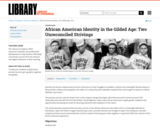
Students use Library of Congress primary sources to examine how African-Americans in the Gilded Age were able to form a meaningful identity for themselves and reject the inferior images fastened upon them.
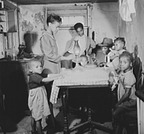
The students will analyze five primary resource images. A Jamboard activity focuses on the African American Great Migration and its push /pull factors (an attached slide show may be used as an alternative). The Jamboard activity allows for student participation, so it can be used as an observation teacher formative assessment.
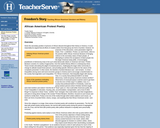
Given the secondary position of persons of African descent throughout their history in America, it could reasonably be argued that all efforts of creative writers from that group are forms of protest. However, for purposes of this discussion, Defining African American protest poetrysome parameters might be drawn. First—a definition. Protest, as used herein, refers to the practice within African American literature of bringing redress to the secondary status of black people, of attempting to achieve the acceptance of black people into the larger American body politic, of encouraging practitioners of democracy truly to live up to what democratic ideals on American soil mean. Protest literature consists of a variety of approaches, from the earliest literary efforts to contemporary times. These include articulating the plight of enslaved persons, challenging the larger white community to change its attitude toward those persons, and providing specific reference points for the nature of the complaints presented. In other words, the intention of protest literature was—and remains—to show inequalities among races and socio-economic groups in America and to encourage a transformation in the society that engenders such inequalities. For African Americans, Some of the questions motivating African American protest poetrythat inequality began with slavery. How, in a country that professed belief in an ideal democracy, could one group of persons enslave another? What forms of moral persuasion could be used to get them to see the error of their ways? In addition, how, in a country that professed belief in Christianity, could one group enslave persons whom Christian doctrine taught were their brothers and sisters? And the list of “hows” goes on. How could white Americans justify Jim Crow? Inequalities in education, housing, jobs, accommodation, transportation, and a host of other things? In response to these “hows,” another “how” emerged. How could writers use their imaginations and pens to bring about change in the society? Protest literature, therefore, focused on such issues and worked to rectify them. Poetry is but one of the media through which writers address such issues, as there are forms of protest fiction, drama, essays, and anything else that African Americans wrote—and write.
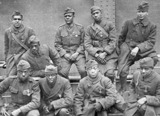
In this lesson, students will survey the extent of and experiences of African Americans in military service during US war efforts from the Revolution to the Vietnam Conflict using a Hyperdoc (see attached) that can be assigned using your LMS system.
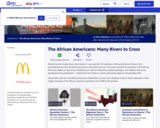
Noted Harvard scholar Henry Louis Gates, Jr. recounts the full trajectory of African-American history in his groundbreaking series The African Americans: Many Rivers to Cross. The series explores the evolution of the African-American people, as well as the multiplicity of cultural institutions, political strategies, and religious and social perspectives they developed — forging their own history, culture and society against unimaginable odds.
Using video clips from The African Americans: Many Rivers to Cross, this collection of lesson plans addresses a wide range of themes of the African-American experience from 1500 to the present.
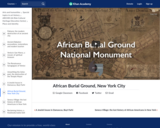
Rodney Leon, African Burial Ground National Monument, 2006, New York City, An ARCHES video, speakers Dr. Renée Ater and Dr. Steven Zucker. Created by Smarthistory.
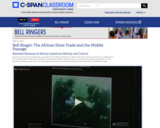
A look at the Slavery and Freedom exhibit at the recently opened National Museum of African American History and Culture on Washington, D.C.'s National Mall.
American History TV presented live coverage from the National Museum of African American History and Culture on Washington, D.C.'s National Mall. They showed exhibits chronicling the African American story from slavery through the inauguration of the first African American president. This clip features elements surrounding the African Slave Trade and the Middle Passage
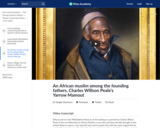
How a portrait of an African muslim came to hang side-by-side with the founding fathers in one of America's earliest museums. Charles Willson Peale, Portrait of Yarrow Mamout (Muhammad Yaro), 1819, oil on canvas, 61 x 50.8 cm (Philadelphia Museum of Art) Speakers: Dr. Carol Eaton Soltis, Project Associate Curator, Philadelphia Museum of Art and Dr. Steven Zucker. Created by Beth Harris and Steven Zucker. Find learning related resources here: https://smarthistory.org/seeing-america-2/